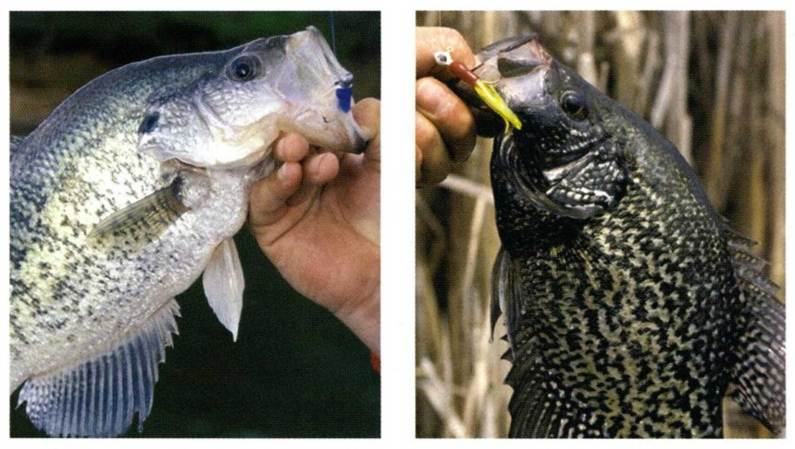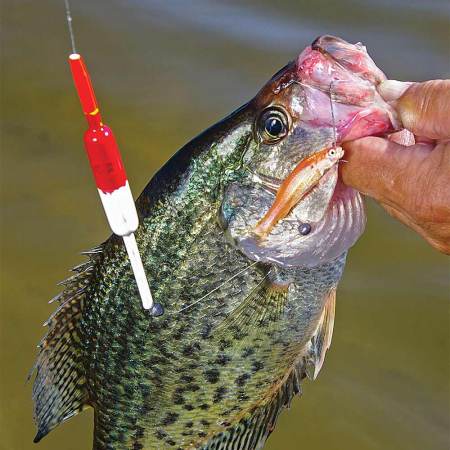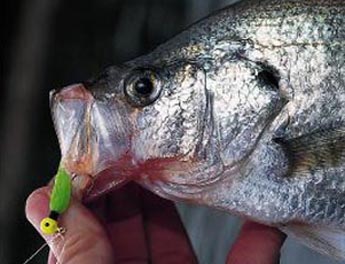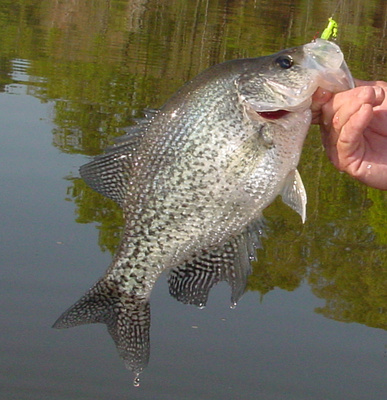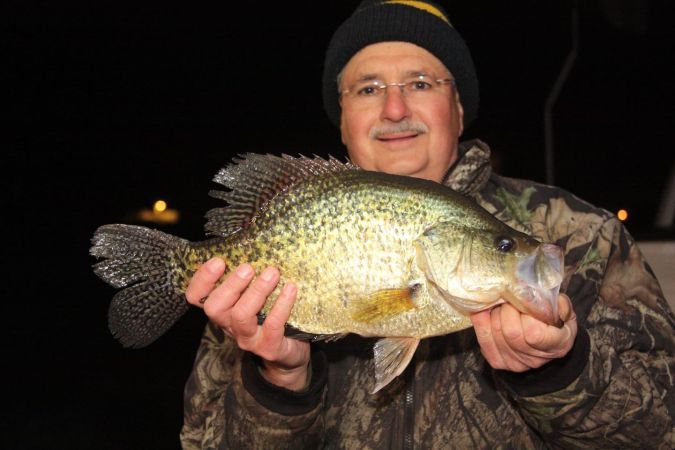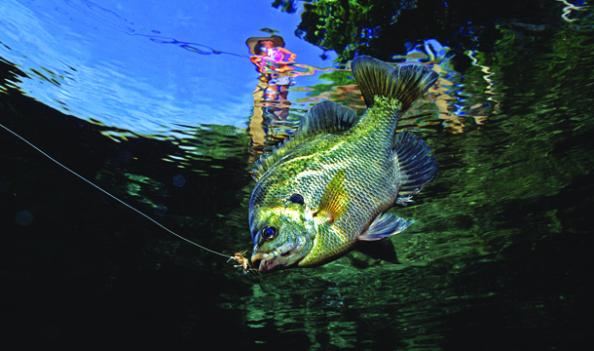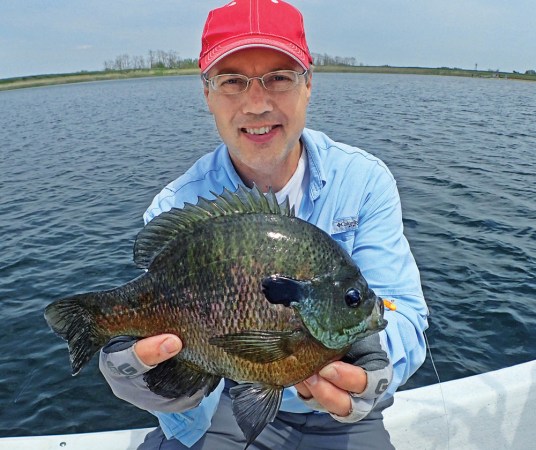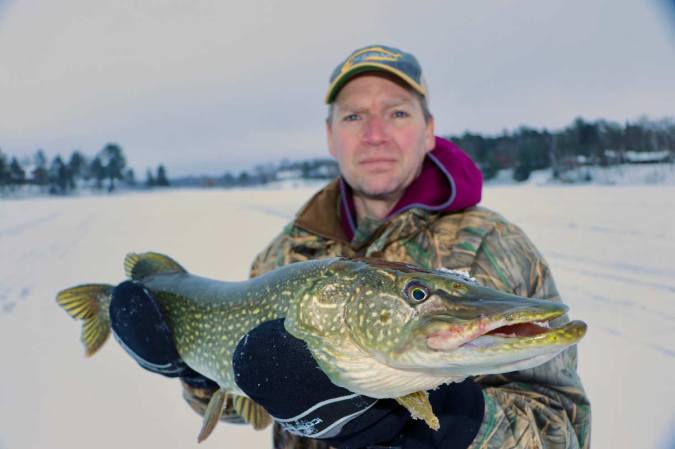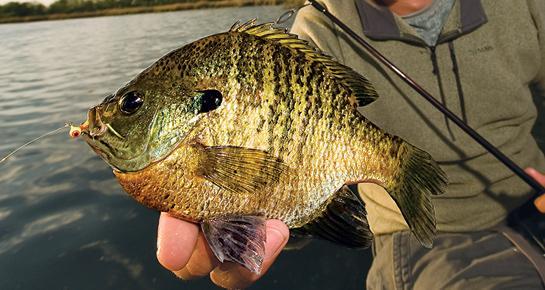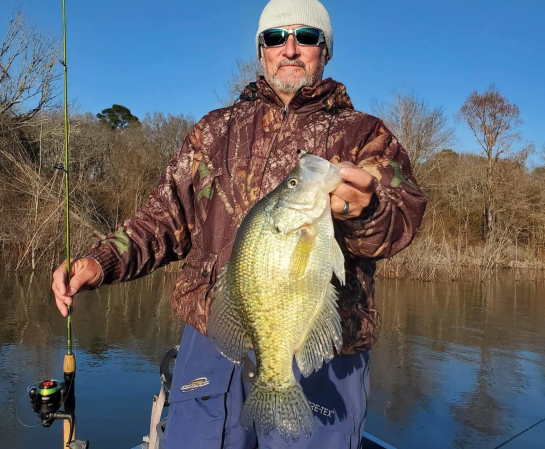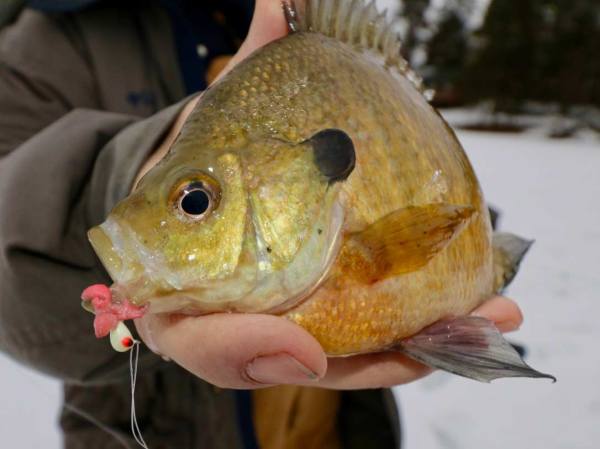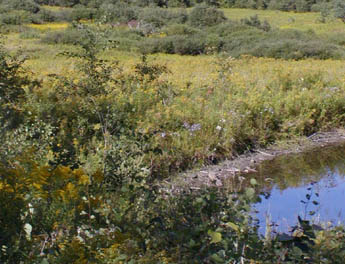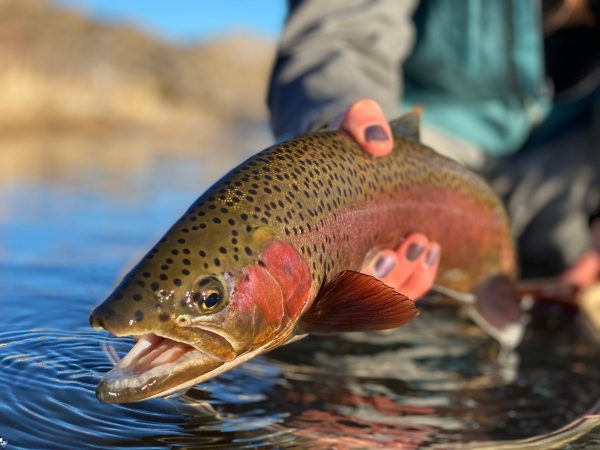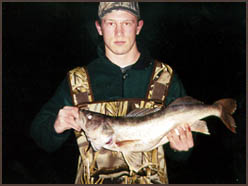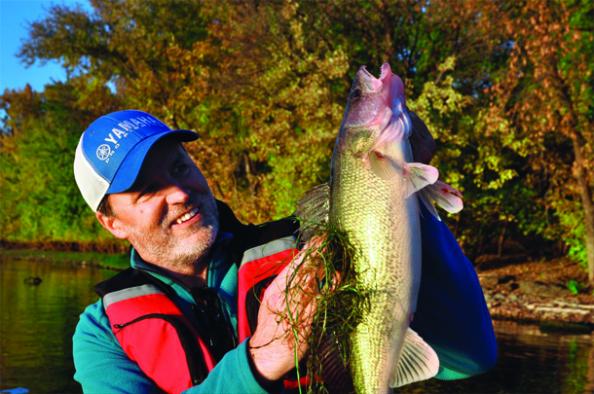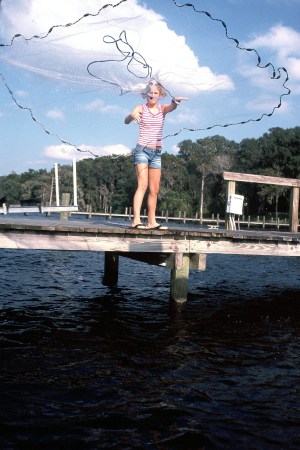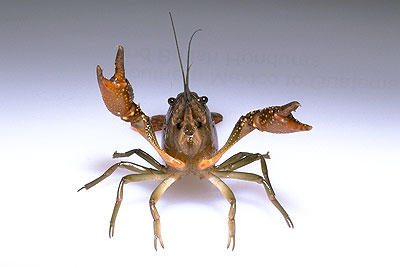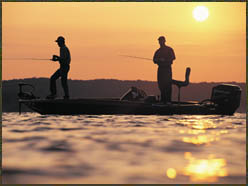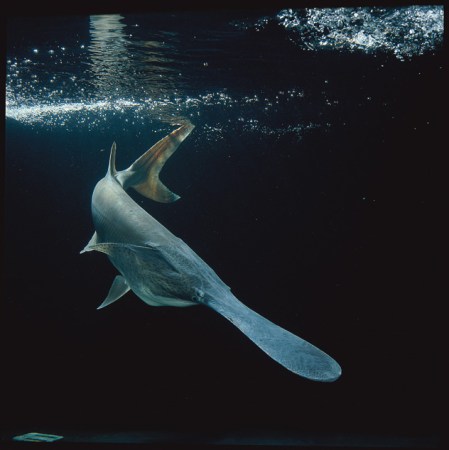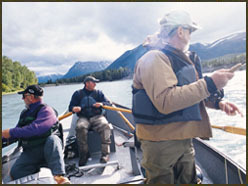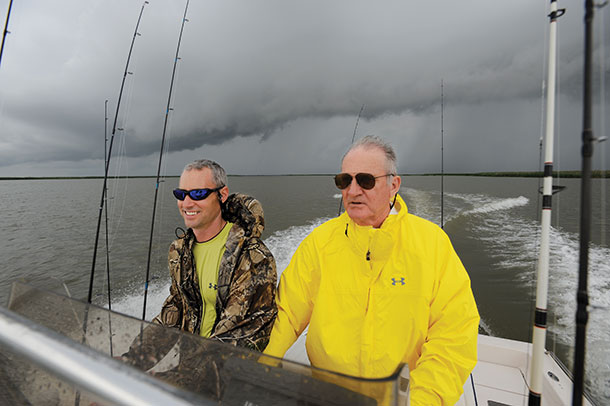Florida angler Sam Aversa thinks it’s cool. Wally Marshall, the Texas angler known as “Mr. Crappie,” calls it his favorite technique. And TV fishing show host Bill Dance is downright obsessed with it.
A growing legion of crappie-fishing enthusiasts has discovered the distinct advantages of wading during the spring and early summer months. These adventurous anglers utilize their feet to find spawning crappies in water so shallow it’s barely wet.
In the spring, when water temperatures reach a suitable stage for crappies to spawn, many lakes and rivers have backwater areas loaded with papermouths that are not accessible by boat. Yet reaching the crappies’ shallow-water lairs with chest or even hip waders is seldom a problem.
“Most people don’t wade-fish for crappies, even though it often produces bigger crappies than boat-fishing does, because they don’t like to get outside their boats and wade around on the bottom of a lake,” says Tennessee guide Kent Driscol. He often takes his fishing clients wading in Mississippi’s Lake Arkabutla and resorts to the tactic when he’s competing in crappie tournaments.
SNEAKY DOES IT
The biggest advantage with wading is that it allows a fisherman to approach his quarry without alerting them to his presence. Moving quietly and slowly with no splashes or wakes, an angler can sneak up on crappies in a stealthy approach similar to that of a blue heron. The best depth for wading is knee- to hip-deep water. It is important to move each foot slowly to avoid alerting the fish to your presence, and to detect bottom changes and cover.
“Wading gives you a built-in depth finder–your feet,” Dance observes. “You can feel the bottom begin to drop away under you as you approach a hole or deeper ledge.
“Wading will also tell you facts about the bottom composition, which can be a tip-off to crappie location,” Dance continues. “A firm clay or sand bottom makes ideal habitat for spawning crappies, while a soft, muddy area is less attractive to the fish. The soft bottoms can be tough to wade and even dangerous. If the mud is more than ankle deep, it can be a real chore to negotiate on foot. Plus, the mud might contain deeper holes where you could bog down–another reason to wear a PFD in unfamiliar waters.”
TAKING TEMPERATURES
Florida guide Sam Aversa notes that wading helps him find crappies and bass because he can detect minor changes in the water temperature. In the spring, slightly warmer water attracts the earliest spawners. The situation is reversed in the summer months.
“The key to finding any kind of fish in the summer is finding spots that are a little bit cooler than others,” Aversa says. “In the summer, I do a lot of wet-wading in shorts and sneakers through open flats where there’s not much grass. As you wade through an area, it’s not unusual to notice what seems to be a 5-degree temperature change in a certain spot, either beneath a really thick grass bed or around some lily pads. And that temperature change is enough to attract crappies.”
To an angler wading for crappies, each section of a shoreline becomes like a small, familiar farm pond as you study it intensively and fish it meticulously. Since crappie fishing on foot limits the angler to a specific area, you are more likely to saturate that spot with the kind of pinpoint precision that is well-suited for catching cover-oriented crappies.
“One of the biggest advantages in wading for crappies is that it allows you to fish an area more thoroughly and considerably more quickly,” Dance says. “You fish each piece of cover more efficiently, but you do it in a quicker manner because there isn’t a lot of wasted time and effort.”
Wading also pays big dividends on the days when high winds on open water wreak havoc with boaters.
When Driscol approaches a shallow piece of cover, he attempts to wade in from the downwind (and downcurrent) side to avoid muddying the water or spooking crappies. He moves slowly and deliberately, making as little noise and water displacement as possible before he gets into position to drop a jig into the brush.
Lake Okeechobee guide Jim Fowler, who often hops out of his boat to reach the largest crappies during times of low water, takes two other precautions: He wears camouflage clothing that matches the background and considers the angle of the sun in his fishing approaches. Fowler recommends making quartering casts toward the sun or keeping it in front of you, if possible. This will keep your shadow from falling onto the water you want to fish, which might alert shallow-water crappies to your presence. They will either leave temporarily or refuse to bite.
SCOUT THE AREA
Success when wading for crappies is often determined by the decisions made before you get your feet wet.
The experts suggest selecting areas that offer a variation in both water depth and cover. Study available cover and likely bottom composition to find areas that can be waded easily and serve as likely spawning grounds for crappies. Flat terrain often indicates a shallow area that continues for a considerable distance. Conversely, a sharply sloping shoreline might be near an underwater drop-off.
A rocky or sandy bottom suggests a firm bottom where crappies prefer to spawn. Black mud indicates a soft, mucky bottom that could smother eggs and is therefore avoided by crappies. Emergent vegetation can provide clues. For example, cattails and lily pads tend to grow in a soft bottom unfit for spawning papermouths.
How effective can wading be? Kent Driscol once caught a 10-fish stringer of Lake Arkabutla crappies that totaled 24 pounds while he was standing in waist-deep water. A day like that is worth getting wet for.
Fishing Ups and Downs
Once you learn a spawning flat thoroughly, it is possible to make a near-perfect lure presentation cast after cast–or perhaps “drop after drop” is a better way of putting it.
“The best technique for fishing any object in crappie spawning spots involves using a vertical presentation,” Bill Dance advises. “In shallow cover like stumps, logs, timber and brush, I’m convinced that you will catch bigger crappies by fishing straight up and down than you can by casting with ultralight gear.
“First of all, you can cover a wider depth range regardless of whether the crappies are suspended up in the water or right on the bottom. Second, you’ll be able to keep your lure in one spot for a longer period of time, which is extremely important in a muddy-water environment. Another advantage is that you’re able to control the correct presentation each and every time. If the fish are extremely inactive and move in tight to the cover, as they would when a cold front moves through, you will be in a much better position to tease them into striking,” Dance says.
The technique commonly referred to as “long-poling” is ideal for wading and making vertical presentations to crappies inhabiting shallow, cover-laden areas. Long-poling involves using a 10- to 12-foot fiberglass or graphite rod to work depths and cover where casting a 1/8-, 1/16- or 1/32-ounce hair jig or tube lure isn’t feasible. Long-poling lets an angler drop a colorful jig or live minnow into small, sparse pockets in vegetation, openings in brush piles and the shady areas around any wooden object. This precise placement offers superb depth control, keeps the bait in the strike zone longer for inactive fish and provides leverage that makes it easier to maneuver crappies out of the cover.
The extra-long pole enables the wading angler to cover a large area with a minimal amount of movement. This can be a major advantage in spring when the crappies are spawning in the super-shallow, freshly flooded backwater areas.
Alabama angler Larry Shadden agrees with that approach. His wading rig consists of a 12-foot cane pole (with guides and a tiptop), a fly reel, a sliding float with a bobber-stopper set at a predetermined depth, small split shot and a live minnow on a No. 1 light-wire hook. It’s a combination that allows him to drop bait directly into the brushy cover where crappies live.
GETTING THE RANGE
Like many industrious crappie fishermen, Tennessee guide Kent Driscol creates his own panfish hangouts by planting brush on the floor of a lake.”In January and February, when the water is low, I cut down buck brush along the bank, weight the brush down with concrete cinder blocks, and line the brush along the edges of underwater ditches, holes, creeks and channels,” Driscol says. “I’ll also put out brush in flats where I know crappies will spawn.”
Driscol then photographs the brush and the land around it. He uses a laser range finder to shoot the distance from the brush pile to three or four surrounding landmarks that will be visible when the water reaches normal level. Then he notes the ranges in a logbook. When the water rises and covers the brush, he uses range triangulation to find the pile again.

